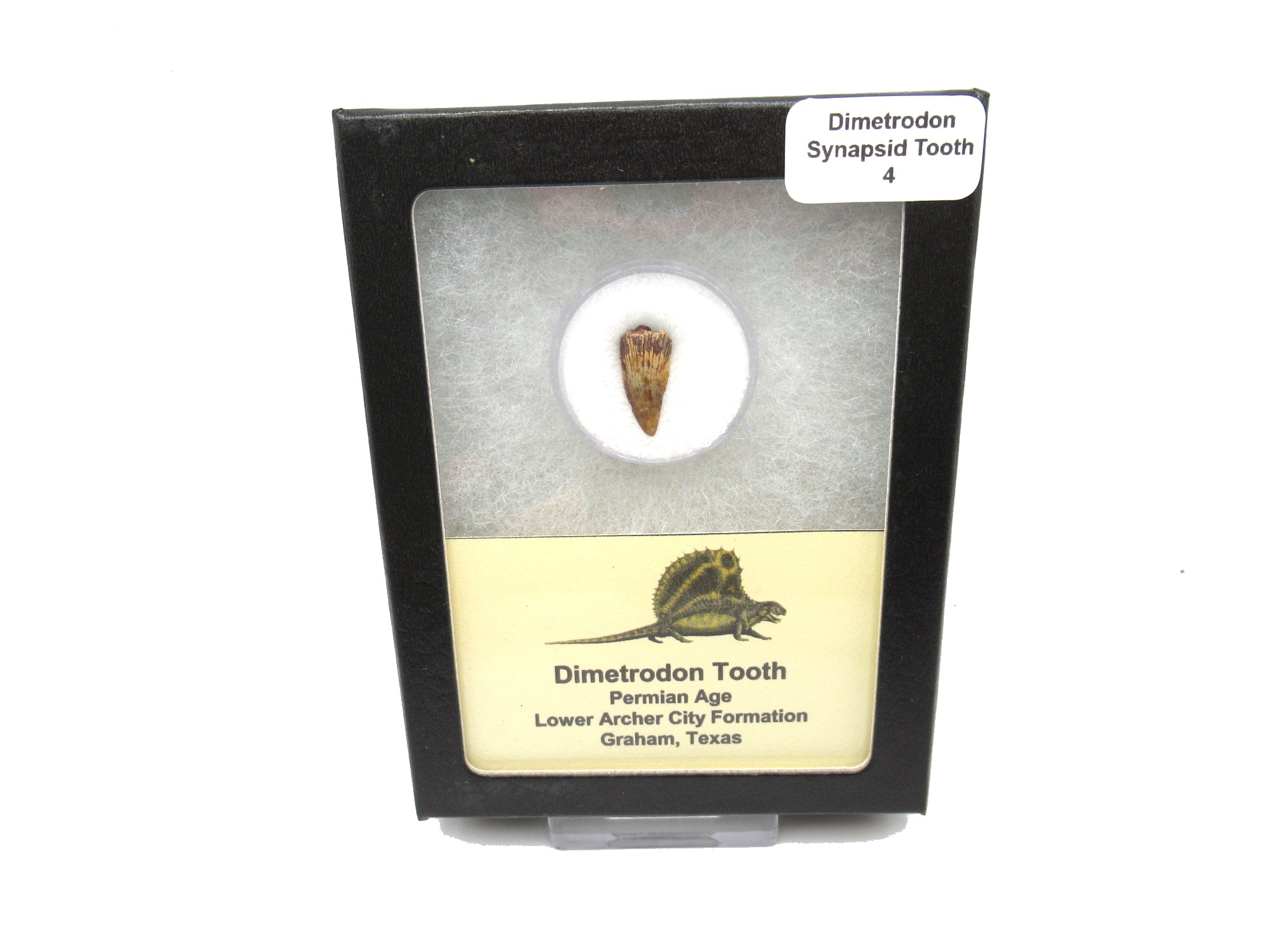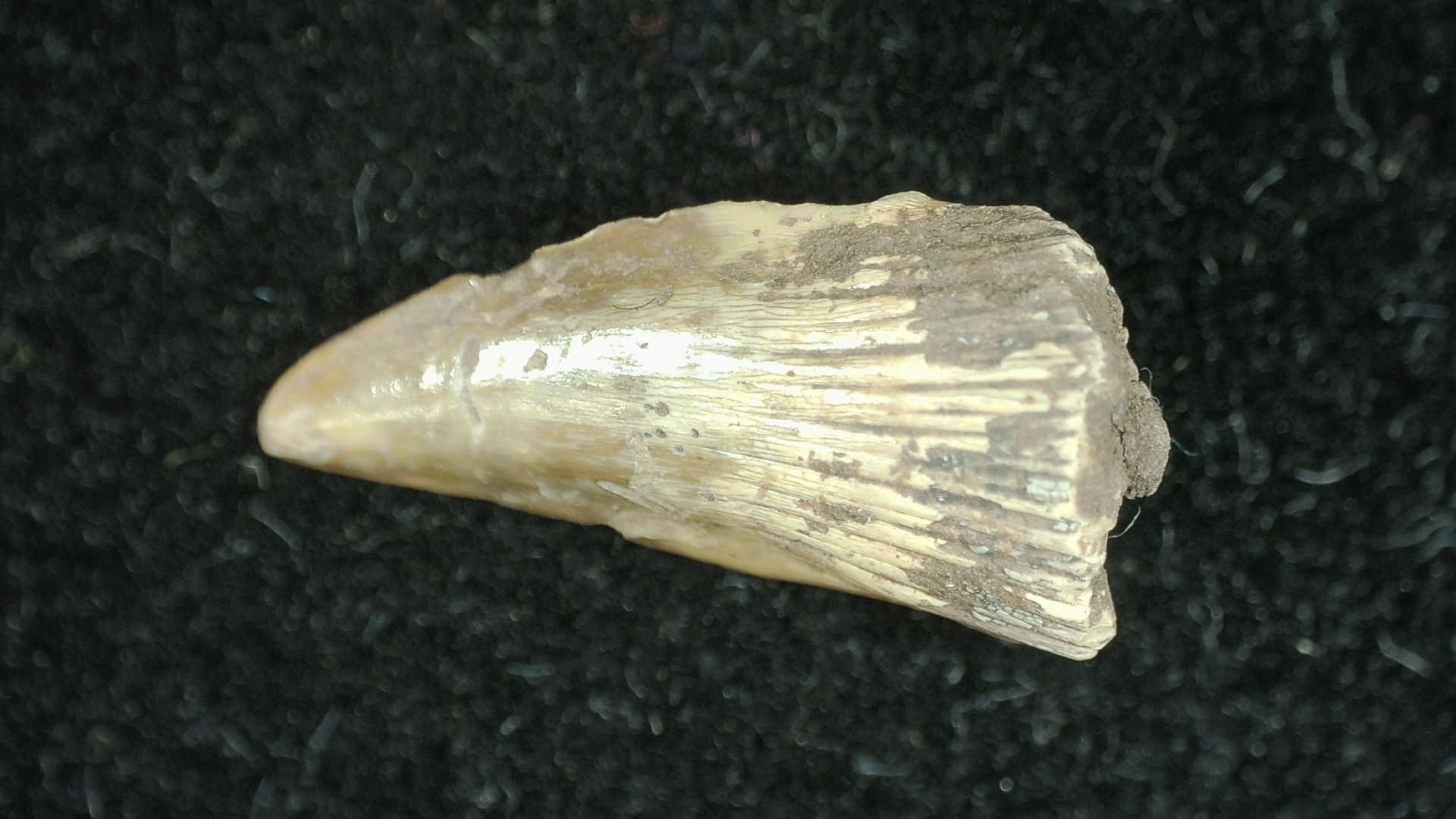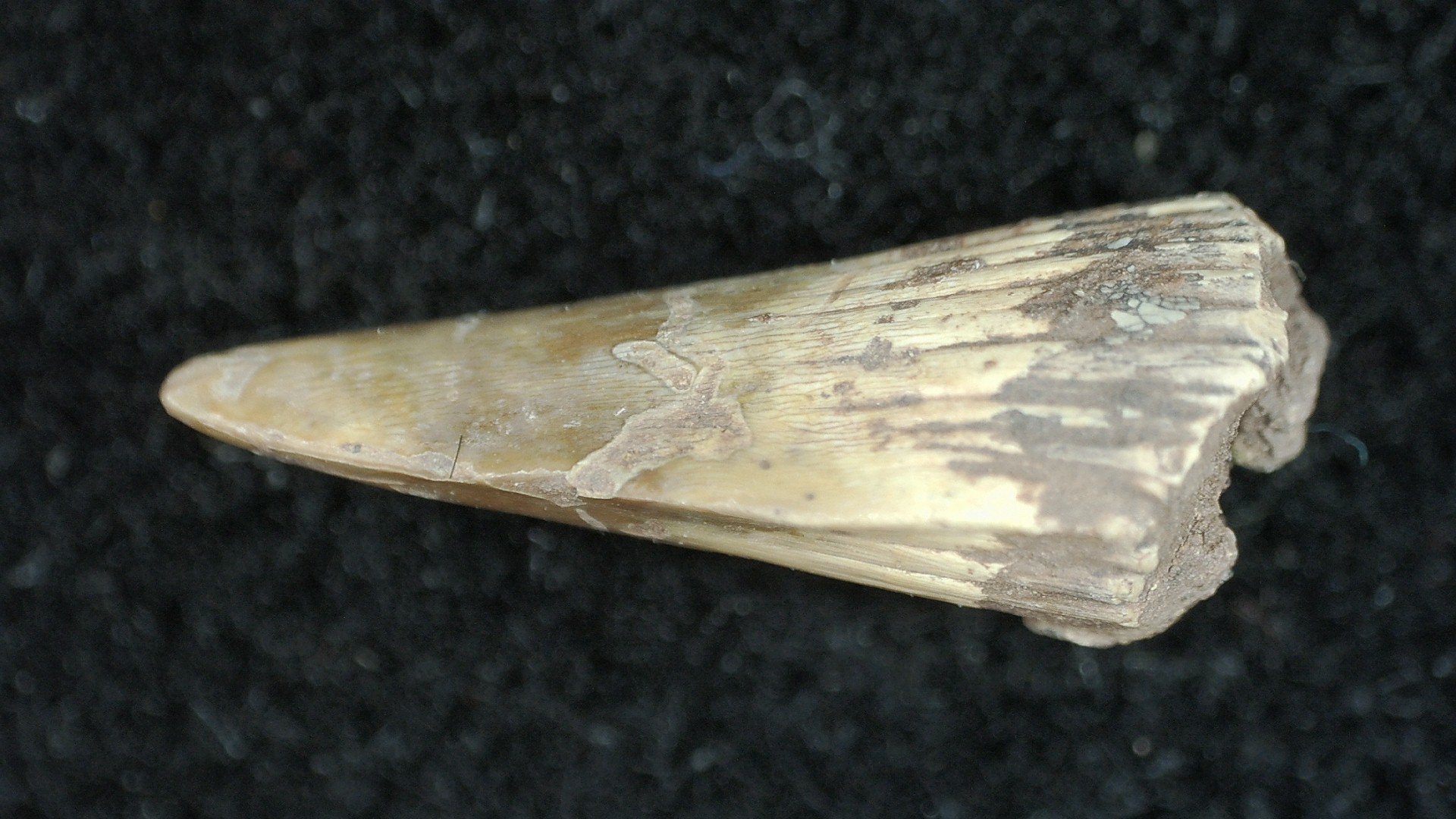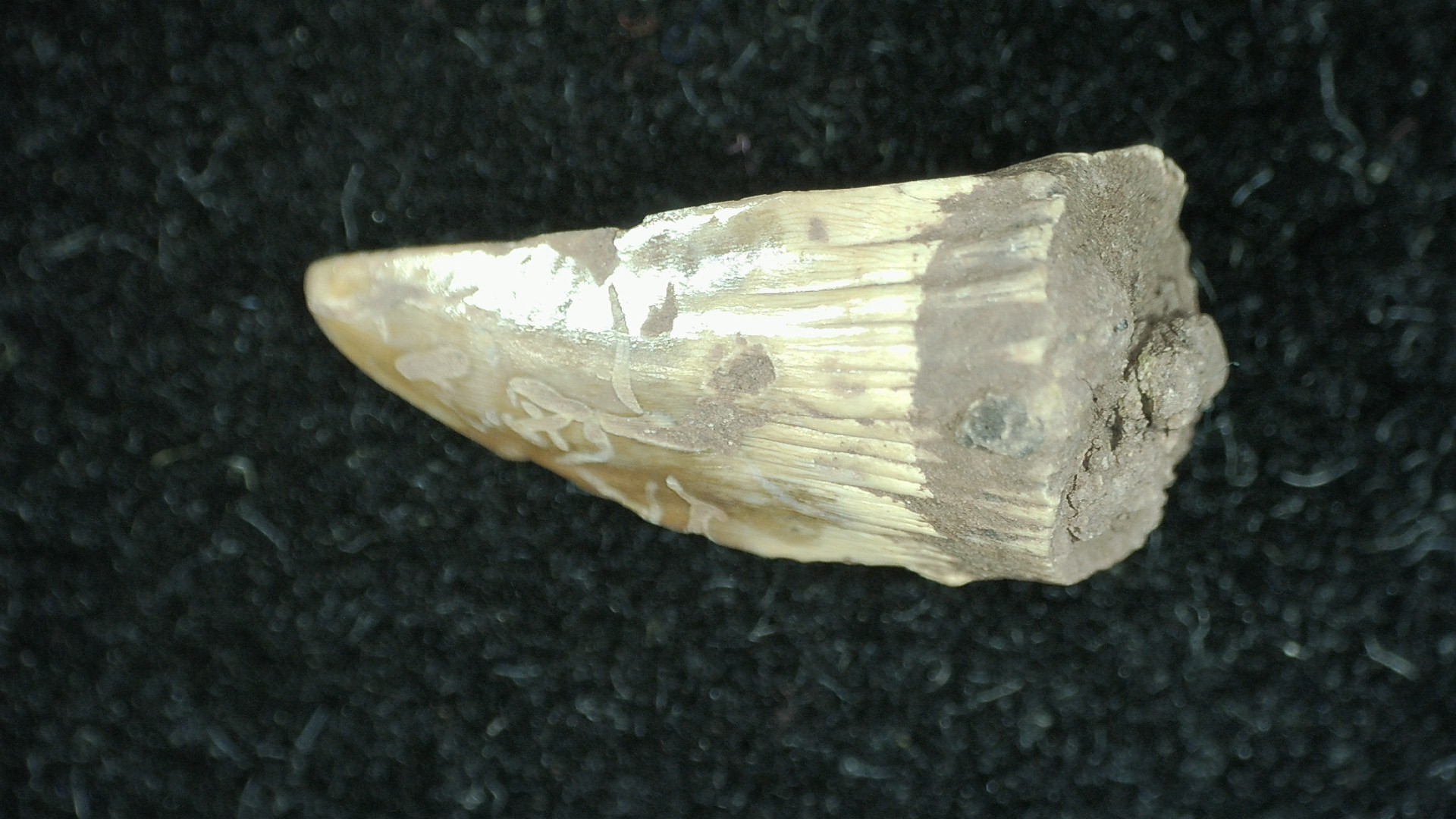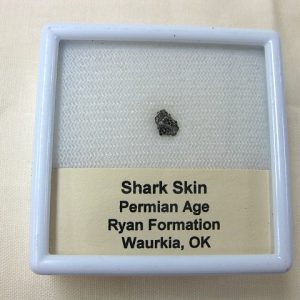Description
- Dimetrodon Tooth
- Lower Permian Age
- Lower Archer City Formation
- Graham, Texas
- This RARE TOOTH measures .60″ long and will come in a 3.25″ x 4.25″ Riker Mount with Label as Shown
Dimetrodon meaning “two measures of teeth,” is an extinct genus of non-mammalian synapsid that lived during the Early Permian, around 295–272 million years ago. It is a member of the family Sphenacodontidae. The most prominent feature of Dimetrodon is the large neural spine sail on its back formed by elongated spines extending from the vertebrae.
Dimetrodon was a quadrupedal, sail-backed synapsid. Most Dimetrodon species ranged in length from 1.7 to 4.6 m (6 to 15 ft) and are estimated to have weighed between 28 and 250 kg (60 and 550 lb). The largest known species of Dimetrodon is D. angelensis, around 4 m (13 ft) and the smallest is D. teutonis at 60 cm (24 in). The larger species of Dimetrodon were among the largest predators of the Early Permian,

